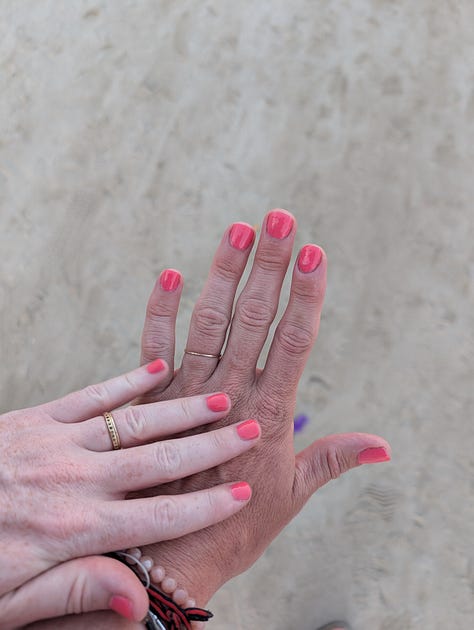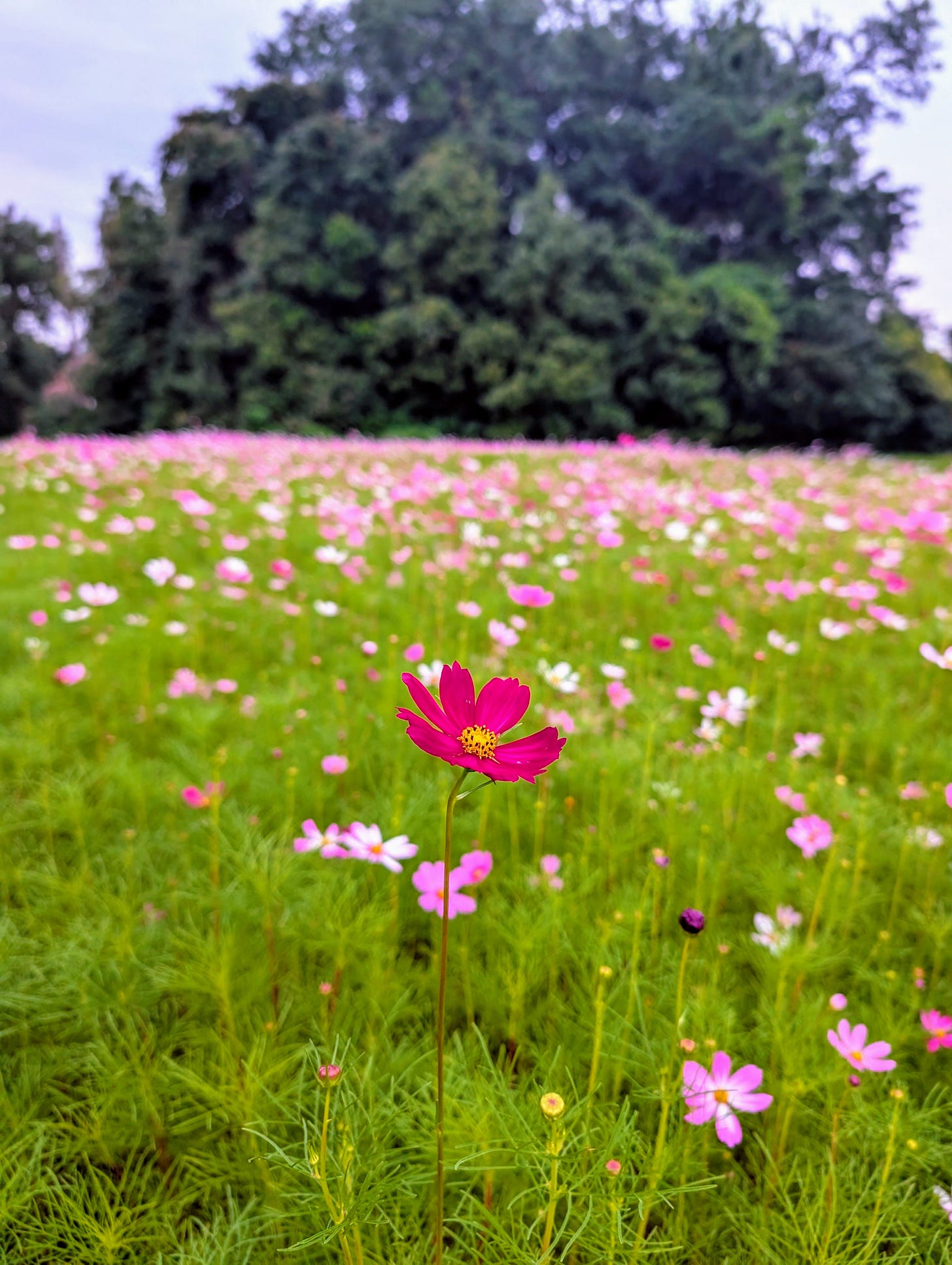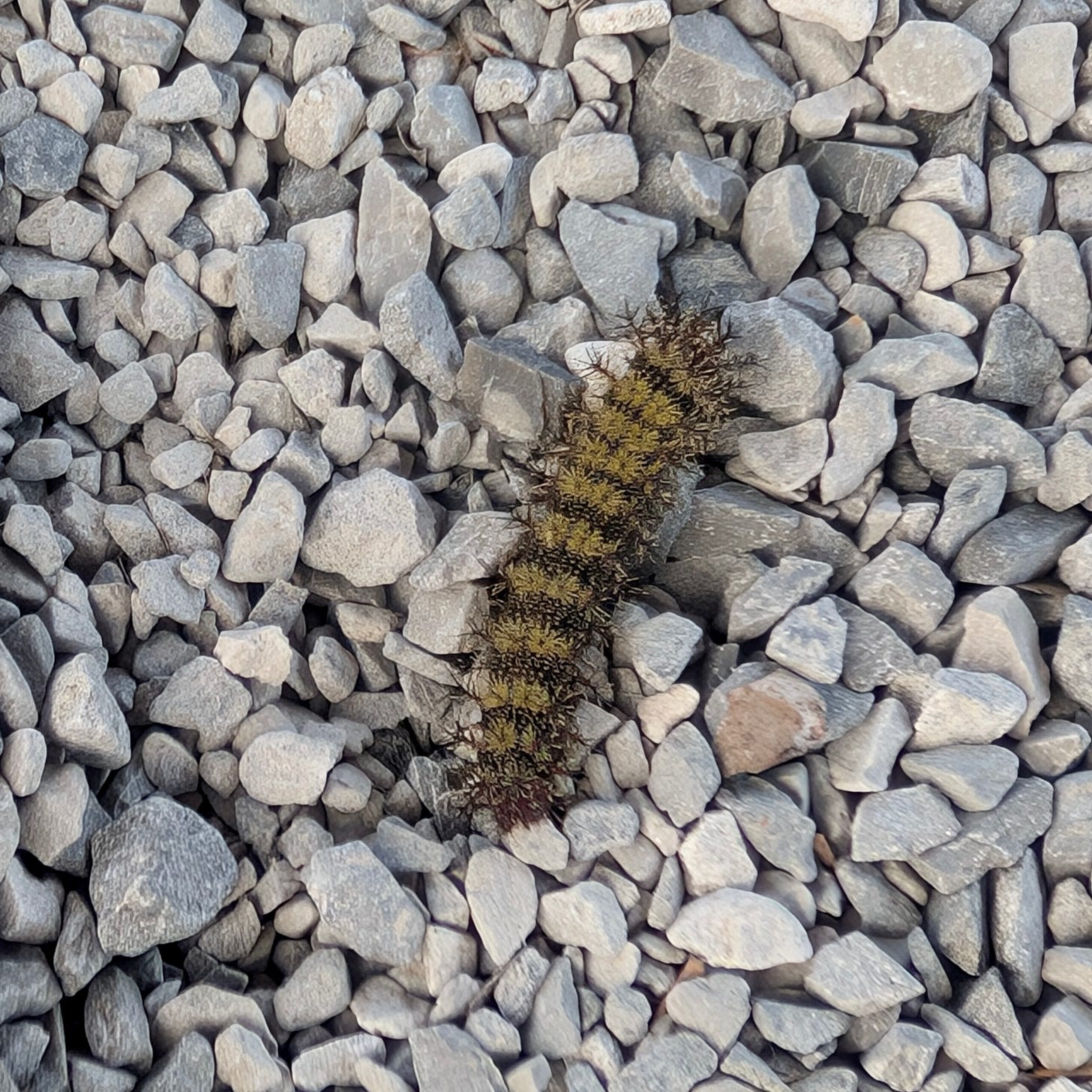The other day, as we were running under the oak trees of Gentilly Blvd, talking about a book we're reading together, I said,
"kindness & caterpillars."
I'm not exactly sure what I had intended to say, but that comment stopped us mid-step for a moment of intense laughter.
Kelly and I run together a few times throughout the week. While we spend much time together, running is our time, completely free of distractions. No phones, no cats, no yoga notebooks. Just us. In a way, it's our therapy. It's when whatever is floating around in our minds bubbles up, from a challenging interaction between us to interactions with others, to random, silly thoughts.
Hence "Kindness & caterpillars."
The book we were talking about was Nine Lives, and we had just finished reading the first story the evening before. The story is of a Jain woman renunciate going through a long, intentional fasting process that ultimately ends in death called sallekhanā. Jainism is one of the world's oldest religions. One of Jainism's central philosophies is the practice of non-harming (ahiṃsā).
Under almost any oak tree in New Orleans right now, there are somewhere between 10 and 10,000 caterpillars. Some falling from the tree, others walking across the sidewalk, and many, at some trees tons smashed, dead. I imagine everyone here has a caterpillar encounter story from this spring.
I was at my favorite Mid-City coffee shop a few weeks ago, sitting outside, when I overheard this old bearded man tell a younger woman, mostly ignoring him, "watch out, the caterpillars are everywhere." A minute later, as she went to grab her computer from her backpack, she screamed, "There's one in my bag!" I looked her way. She immediately packed up and left. That's when I saw millions of crushed caterpillars all over the ground. I immediately packed up and left.
So as we dodged living and dead caterpillars during our run, the back of my mind must have been thinking about how the Jain nun would use a broom of peacock feathers to sweep her path before each step, making sure she would not accidentally cause harm to another life.
That's an intense practice of ahiṃsā, right? She would make sure not to step on a bug with each step. What's your instinctual reaction when you see a roach? Or a spider? Or when a mosquito lands on your arm? I'm not implying what you do is wrong, I've certainly killed our massive blood sucking mosquitos more times than I can think, though these days I try not to react like that right a way. I think a big part of the spiritual path is changing those immediate, "instinctual", triggered responses. It goes back to that conversation about 'what we have control over.' (Quick recap, we certainly don't have much control, but we do control our thoughts, words, and actions.)
As Kelly and I continued our run along the sidewalk, subconsciously causing the least harm possible, I wondered what those seemingly scary, falling from Oak tree, caterpillars turned into. How grand are they? What colors are their wings? What plants do they pollinate? The other day, under the City Park Peristyle for yoga, a place casually visited by caterpillars, I heard someone say,
"If I turned into a beautiful butterfly, I'd have painful stingers to protect me as I transitioned, too."
Well, it turns out that our green-spiked friend's metamorphosis transitions them to Buck Moths. While not beautiful butterflies, they aren't the ugliest moths either, and we all know beauty is subjective and another mental construct. Learn more about Buck moths here. It was a fun rabbit hole.
If you're like me, you're probably still wondering about the Jain practice of sallekhanā I mentioned at the beginning of this. That's a whole other rabbit hole that I've been fascinated by. I've been interested in learning more about Jainism for a while. I know some of their basic philosophy (join me for a yoga philosophy workshop to learn more), but I wasn't aware of this intentional life-ending practice. The Jain people I know tend to talk a lot about non-harming, veganism, and Mahavira, their most recent Tīrthaṅkara ('ford-maker', the one who fords the river). We haven't met any Jain people during our trips to India, though I will try to make that happen this year. After reading this story in William Dalrymple's book, I would love to talk with a Jain sadhu.
Sallekhanā is an optional vow for a Jain who is older or extremely sick. In short, the process works, under the guidance of a teacher, slowly and methodically eating fewer types of food and less food, then only taking water daily, followed by less frequent water intake, and ultimately passing from malnutrition. The Jain nun, in the story, repeatedly asserts to the narrator that this is not suicide. Instead, it is a decision to face death voluntarily and peacefully. Moreover, she knew in the deepest part of her a teaching common to most Eastern traditions - death is not the end. (Have you heard the Nick Cave cover of the Bob Dylan song "Death Is Not the End"? It seems Bob also knows this.)
While I won't go into much more detail now, understanding that we are not [just] our body-mind, but instead something more fundamental, more true, is an important understanding of discernment and something that can only be experienced directly. Clearly, the Jain nun, with her conviction, had had a direct experience, which allowed her to make such an important decision with certainty.
This is why I run. To process thoughts like Buck Moths, Jainism, human interactions, kindness, and caterpillars.
And to spend that uninterrupted time with my bestie. ❤️









